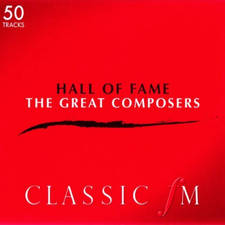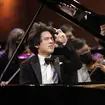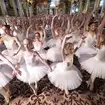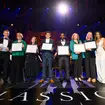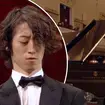The music of Bond villains: the best classical cameos
22 August 2014, 11:51 | Updated: 6 January 2017, 14:45
James Bond films are best known for their theme tunes, composed and/or sung by the pop stars of the day. But classical music - and classical props - have made some beautiful, chilling and funny appearances.
Ever noticed how Bond villains actually love classical music, while James Bond himself just uses it to mercilessly wreck their mad dreams?
The Spy Who Loved Me
In 1977’s The Spy Who Loved Me, Karl Stromberg, a madman who wants to nuke the world and start a new civilisation under the sea, plays Bach’s Air on The G String to enhance the enjoyment of watching sharks eat his treacherous henchwoman. Stromberg has an eye for spectacle, so when his lair emerges from the ocean, it is to the strains of Mozart’s Piano Concerto No. 21. Perhaps he’s not so mad after all.
Moonraker
Stromberg isn’t the only Bond villain with a love of classical music. In Moonraker, Hugo Drax, surrounded by Louis XVI furniture, plays Chopin’s ‘Raindrop’ prelude on a Steinway. Not for the first time, Bond interrupts a beautiful recital.
Drax’s tastes in classical music are eclectic. Even when he goes hunting, he has a henchman to play Richard Strauss’s Thus Spake Zarathustra on a hunting horn. Oh fiddlesticks; there's Bond again to spoil Drax's musical fun.
Live and Let Die
Sometimes the henchmen share a penchant for classical. Look at the unkillable voodoo henchman Baron Samedi in Live and Let Die, happily playing a rustic folk song on his flute, before being disturbed by Bond and his beautiful accomplice Solitaire, played by Jane Seymour. What's that you say? The flute is actually a cunningly disguised walkie-talkie? Whatever.
Quantum of Solace
In Quantum of Solace, 007, played by Daniel Craig, uses the villain’s love of classical music against him. Bond follows Dominic Greene to the Bregenz open air theatre. While performers sing Tosca below, Bond exploits the fact all the villains are off their guard and enjoying exquisite opera by using a microphone to eavesdrop on them. Have some respect for the performers, 007.
Never Say Never Again
In Never Say Never Again, Bond is at it again. Everyone's enjoying the ballroom dancing, except Kim Basinger, because her dance partner, sixty-something Sean Connery, insists on explaining key plot points to her.
The Living Daylights
Bond is known for treating his lovers badly, but in The Living Daylights, Timothy Dalton’s 007 is saving his most caddish behaviour for the musical instruments. Maryam D’Abo's cello case is commandeered as a sledge, while the priceless instrument itself becomes a means of steering them down a snowy mountain from Soviet Czechoslovakia into Austria.
Close Encounters
You can hardly blame Bond for not liking classical music, given all those forced visits to the opera to spy on baddies. But he does seem to have a soft spot for film music. The late 1970s is a period which many Bond fans would prefer to forget. Roger Moore’s Bond flirted with slapstick comedy, and the sound editors got in on the action too. A number of classic film scores make an appearance in these Bond films. In The Spy Who Loved Me, Moore’s desert escapades are accompanied by Lawrence of Arabia...
...while in Moonraker, a musical keypad plays the unmistakable hook from Close Encounters of the Third Kind when Bond inputs the correct code.
